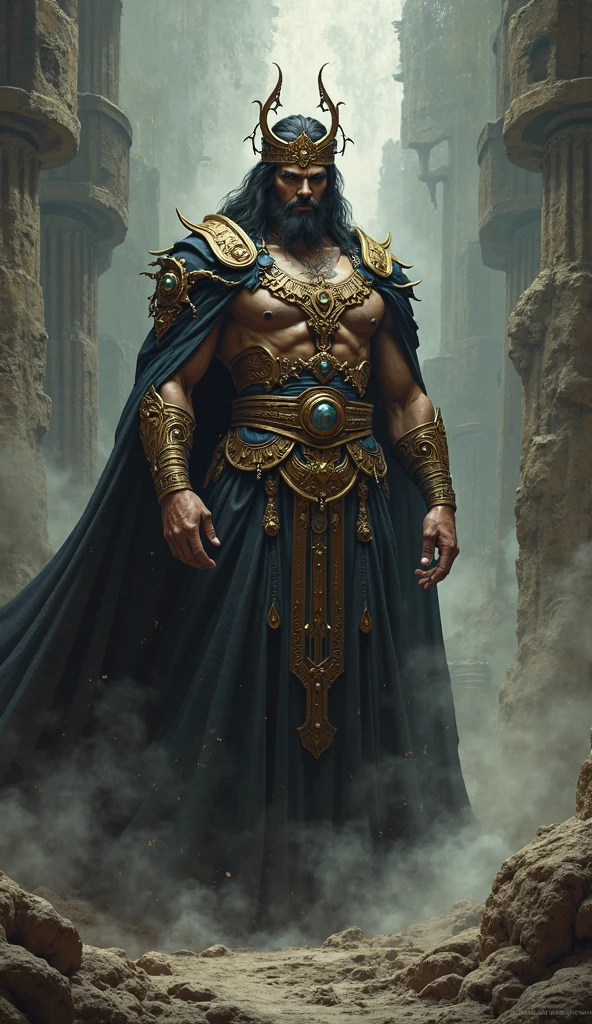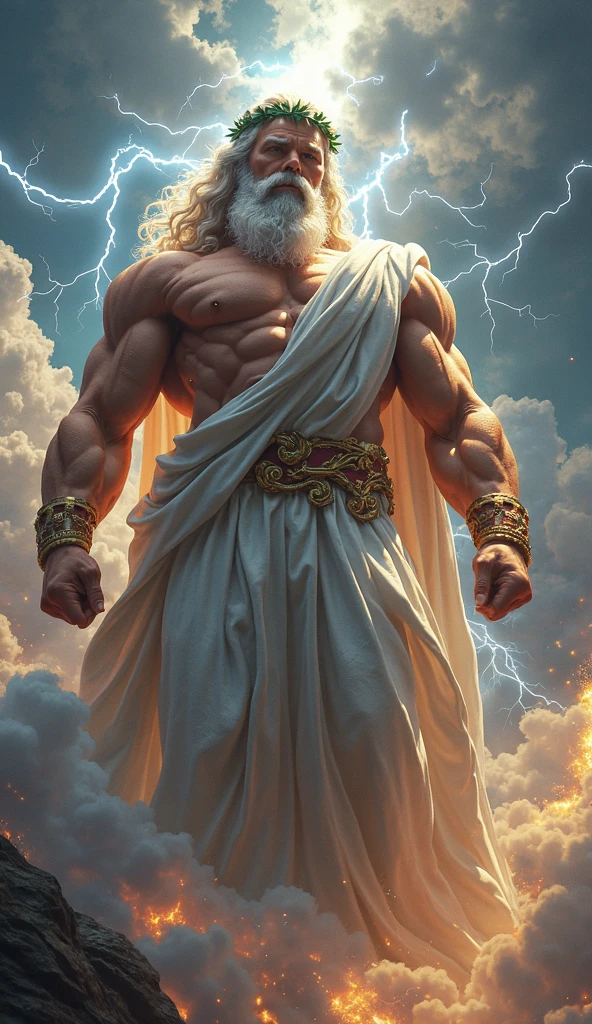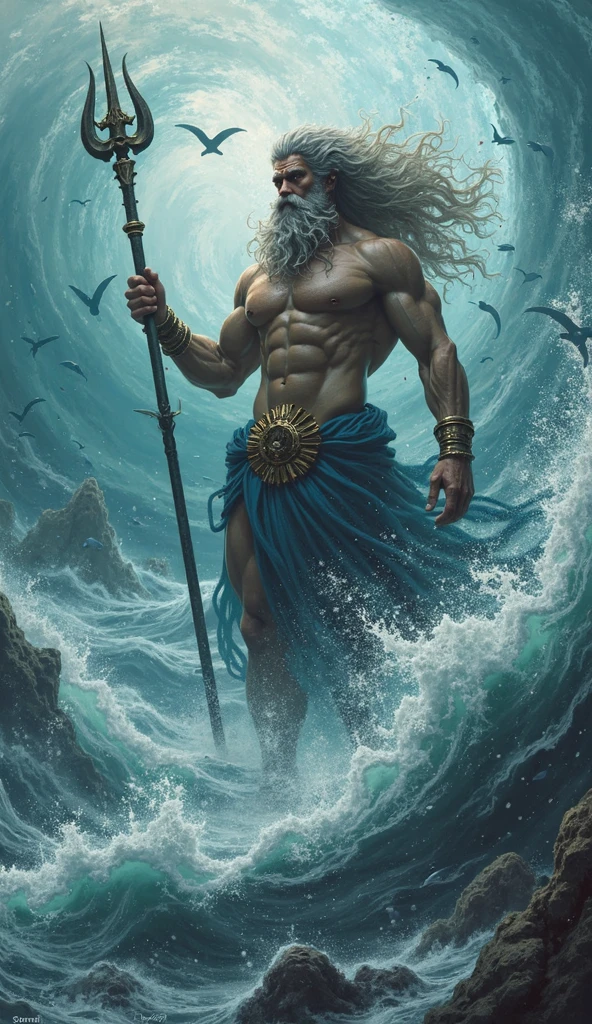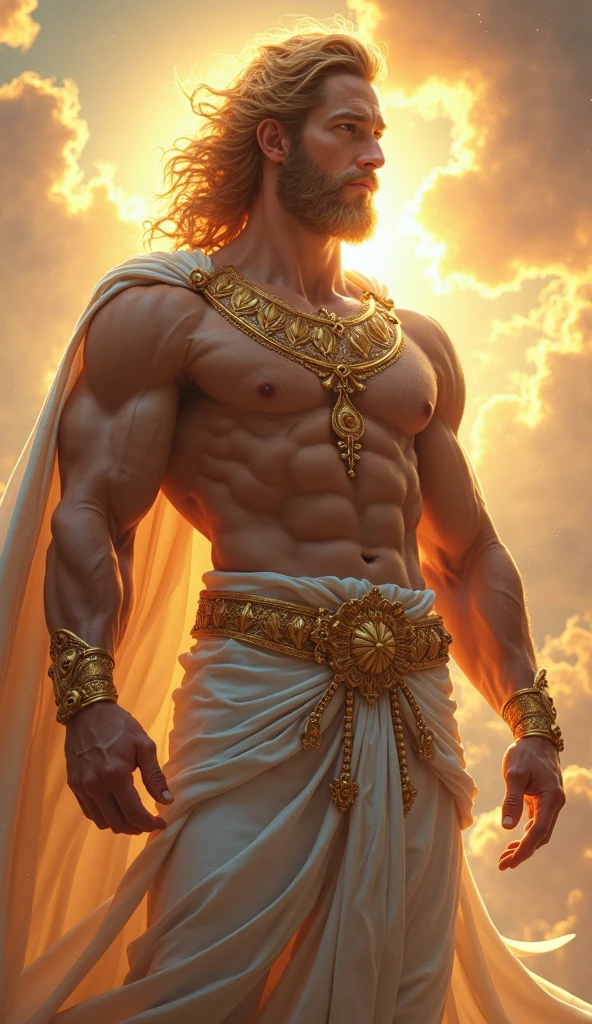Jade Emperor Rules Heaven and Earth Supreme Power
The Jade Emperor, known as Yù Huáng in Chinese, is one of the most revered deities in Taoism and Chinese mythology. As the supreme ruler of Heaven and Earth, his influence spans across religious, cultural, and historical narratives. This article explores his origins, powers, and significance in both ancient and modern contexts.
The Origins of the Jade Emperor
The Jade Emperor is believed to have ascended to his divine throne after countless eons of cultivation and virtue. According to Taoist tradition, he was once a mortal prince who dedicated his life to spiritual enlightenment. His journey to godhood is a central theme in many myths, symbolizing perseverance and righteousness.
Key Myths About His Ascension
- The Jade Emperor meditated for 3,000 kalpas (eons) to attain supreme wisdom.
- He overcame 1,750 trials, each testing his compassion and moral integrity.
- His final challenge was defeating a demonic rebellion threatening the cosmic order.
The Jade Emperor’s Role in Taoism
In Taoism, the Jade Emperor is the celestial administrator, overseeing the heavens, earth, and underworld. He governs a vast bureaucracy of gods, immortals, and spirits, ensuring harmony in the universe. His authority is absolute, yet his rule is just and benevolent.
Hierarchy of the Heavenly Court
| Rank | Deity | Responsibility |
|---|---|---|
| 1 | Jade Emperor | Supreme ruler of all realms |
| 2 | Three Pure Ones | Manifestations of the Tao |
| 3 | Four Heavenly Kings | Guardians of the cardinal directions |
Symbolism and Worship
The Jade Emperor embodies the Confucian virtues of righteousness, filial piety, and justice. His image is often depicted in temples, wearing imperial robes and a beaded crown, symbolizing his divine authority. Devotees pray to him for blessings, protection, and guidance in their spiritual journeys.
Rituals and Festivals
- Jade Emperor’s Birthday (9th day of the Lunar New Year) – A major celebration with offerings and temple ceremonies.
- Daily prayers – Many Taoists recite scriptures in his honor to seek wisdom.
- Ancestral rites – Families invoke his name during important life events.
The Jade Emperor in Popular Culture
Beyond religious texts, the Jade Emperor appears in literature, opera, and modern media. His portrayal ranges from a stern judge to a compassionate father figure. For example, in the classic novel Journey to the West, he oversees the heavenly court that Sun Wukong rebels against.
Modern Depictions
- Animated films – Often shown as a wise but distant ruler.
- Video games – Featured as a powerful deity granting quests or blessings.
- Comic books – His character explores themes of justice and cosmic balance.
Comparing the Jade Emperor to Other Deities
The Jade Emperor shares similarities with other supreme gods, such as the Hindu Indra or the Greek Zeus. However, his role is uniquely tied to Chinese cosmology and the Taoist belief in balance. Unlike Zeus, who is often capricious, the Jade Emperor represents unwavering moral order.
Comparative Table of Supreme Deities
| Deity | Culture | Domain |
|---|---|---|
| Jade Emperor | Chinese Taoism | Heaven, Earth, Underworld |
| Zeus | Greek Mythology | Sky and Thunder |
| Indra | Hinduism | Rain and War |
Further Reading on the Jade Emperor
For those interested in deeper exploration, here are some recommended resources:
- Encyclopedia Britannica – Jade Emperor
- Taoist Association – Jade Emperor Worship
- World History – Jade Emperor’s Mythos
Discover more fascinating articles on mythology and spirituality, and don’t forget to follow us on facebook.com/zatiandrops for daily updates!
The Jade Emperor’s Influence on Chinese Philosophy
The Jade Emperor is not only a religious figure but also a cornerstone of Chinese philosophy. His governance reflects the principles of Yin and Yang, emphasizing balance between opposing forces. Unlike Western deities who often intervene directly, the Jade Emperor operates through cosmic laws, aligning with Taoist ideals of wu wei (effortless action).
Philosophical Concepts Linked to the Jade Emperor
- Dao (The Way) – His rule embodies the natural order, guiding without force.
- De (Virtue) – His moral authority stems from benevolence and wisdom.
- Tian Ming (Mandate of Heaven) – Historically, Chinese emperors claimed legitimacy through his divine approval.
The Jade Emperor’s Celestial Bureaucracy
The heavenly court of the Jade Emperor mirrors imperial China’s administrative system. It includes ministries for weather, justice, and even mortal lifespans. Below are key departments and their functions:
| Ministry | Overseen By | Responsibilities |
|---|---|---|
| Thunder Ministry | Lei Gong (Thunder God) | Punishes evil and controls storms |
| Star Registry | Zi Wei Emperor | Records human destinies via constellations |
| Underworld Courts | Yanluo Wang | Judges souls after death |
Notable Officials in His Court
- Guan Yu – God of War and Loyalty, enforcer of justice.
- Mazu – Goddess of the Sea, protects sailors and fishermen.
- Tu Di Gong – Local earth gods reporting mortal deeds.
The Jade Emperor and Chinese Astrology
The Jade Emperor plays a pivotal role in Chinese zodiac mythology. Legend says he organized a race to determine the order of the 12 animals. His decisions shaped cultural traditions, linking each year to specific traits and fortunes.
Zodiac Animals and Their Meanings
| Animal | Position in Race | Symbolism |
|---|---|---|
| Rat | 1st | Cleverness, adaptability |
| Ox | 2nd | Diligence, strength |
| Tiger | 3rd | Bravery, competitiveness |
Sacred Texts Featuring the Jade Emperor
Several Taoist scriptures highlight the Jade Emperor’s teachings. The Jade Emperor’s Mind Seal Classic is a revered text on meditation and immortality. Key passages emphasize:
- Aligning one’s spirit with the cosmos.
- Cultivating qi (life force) through ethical living.
- Seeking harmony with the Three Realms (Heaven, Earth, Underworld).
Other Important Texts
- The Precious Scroll of the Jade Emperor – Details his divine edicts.
- Celestial Treasury Scriptures – Explains his role in karmic retribution.
- Daozang (Taoist Canon) – Contains hymns and rituals in his honor.
Architecture and Sacred Sites
Temples dedicated to the Jade Emperor feature unique architectural elements. The Forbidden City in Beijing symbolically mirrors his heavenly palace, while the Wudang Mountains host Taoist monasteries where devotees meditate to emulate his enlightenment.
Famous Temples
- Yu Huang Miao (Beijing) – Houses a 7-meter statue of the deity.
- Tai Shan (Shandong) – A pilgrimage site where emperors paid homage.
- White Cloud Temple (Beijing) – Center for Taoist rituals invoking his blessings.
The Jade Emperor’s Role in Folktales
Chinese folklore abounds with stories where the Jade Emperor tests mortals’ virtues. In one tale, he disguises himself as a beggar to reward a kind farmer with prosperity. Such narratives reinforce Confucian ethics and the idea that heaven favors the righteous.
Popular Folktales
- The Weaver Girl and the Cowherd – The Jade Emperor separates the lovers as a lesson in duty.
- The Foolish Old Man Moves Mountains – His perseverance impresses the deity, who aids him.
- The Dragon King’s Daughter – Shows his arbitration in celestial disputes.
Modern Scientific Interpretations
Scholars like Joseph Needham analyze the Jade Emperor as a metaphor for natural laws. His celestial bureaucracy parallels ecological systems, where each deity represents a force (e.g., wind, rain). This perspective bridges mythology and early Chinese science.
Scientific Parallels
| Mythological Figure | Natural Phenomenon |
|---|---|
| Lei Gong (Thunder God) | Electrical storms |
| Feng Bo (Wind Earl) | Atmospheric currents |
| Dragon Kings | Hydrological cycles |
Global Influence and Syncretism
The Jade Emperor’s veneration spread via the Chinese diaspora, blending with local beliefs. In Vietnam, he’s called Ngọc Hoàng; in Malaysia, devotees incorporate Malay animist rituals. Even Western museums display Ming-era statues of him.
Regional Adaptations
- Japan – Associated with the Shinto deity Tenjin.
- Thailand – Merged with Theravada Buddhist cosmology.
- Singapore – Celebrated during the Nine Emperor Gods Festival.
Discover more fascinating articles on mythology and spirituality, and don’t forget to follow us on facebook.com/zatiandrops for daily updates!
The Jade Emperor’s Connection to Chinese Medicine
In traditional Chinese medicine, the Jade Emperor is symbolically linked to the balance of bodily energies. Practitioners believe his divine order mirrors the harmony between qi, blood, and the five elements (wood, fire, earth, metal, water). His celestial court even includes deities overseeing health, such as Hua Tuo, the god of healing.
Medical Deities in His Court
| Deity | Specialization | Associated Organs |
|---|---|---|
| Hua Tuo | Surgery | Liver, Gallbladder |
| Sun Simiao | Herbalism | Heart, Small Intestine |
| Zhang Zhongjing | Diagnostics | Spleen, Stomach |
The Jade Emperor’s Role in Martial Arts Mythology
Many Chinese martial arts legends trace their origins to the Jade Emperor’s heavenly realm. For example, the Eight Immortals, who serve under him, are said to have inspired techniques like Tai Chi and Baguazhang. These arts embody Taoist principles of fluidity and balance, reflecting his cosmic governance.
Martial Arts Linked to Celestial Beings
- Tai Chi – Based on the interplay of Yin and Yang, mirroring the Jade Emperor’s dualistic rule.
- Drunken Fist – Legend says it was taught by an immortal who defied heavenly etiquette.
- Monkey Style – Inspired by Sun Wukong’s rebellion against the Jade Emperor’s court.
The Jade Emperor in Chinese Calligraphy
Sacred texts about the Jade Emperor are often written in ornate calligraphy, considered a spiritual practice. The strokes of his name (玉皇) are believed to carry divine energy. Masters spend years perfecting these characters, as they’re used in talismans for protection and blessings.
Symbolic Meanings of His Name
- 玉 (Jade) – Represents purity and immortality.
- 皇 (Emperor) – Signifies supreme authority and cosmic order.
- Combined, the characters embody his role as a bridge between heaven and humanity.
The Jade Emperor’s Influence on Chinese Gardens
Classical Chinese gardens often incorporate designs symbolizing the Jade Emperor’s paradise. Elements like artificial mountains and koi ponds represent his celestial court, while winding paths mimic the Taoist journey to enlightenment. Notable examples include the Hong Kong UNESCO Global Geopark, where rock formations are named after his myths.
Garden Features Inspired by His Realm
- Moon Gates – Circular doorways symbolizing the portal to heaven.
- Scholar’s Rocks – Abstract sculptures representing immortal mountains.
- Red Bridges – Evoke the Rainbow Bridge to the Jade Emperor’s palace.
The Jade Emperor’s Astronomical Associations
Ancient Chinese astronomers mapped the heavens according to the Jade Emperor’s bureaucracy. The North Star, considered his throne, anchors a celestial grid where constellations represent ministries. For instance, the Purple Forbidden Enclosure mirrors his imperial palace.
| Celestial Body | Mythological Role | Modern Identification |
|---|---|---|
| North Star | Jade Emperor’s Throne | Polaris |
| Big Dipper | Seven Celestial Ministers | Ursa Major |
| Orion’s Belt | Three Star Officials | Alnitak, Alnilam, Mintaka |
The Jade Emperor’s Role in Marriage Customs
Traditional Chinese weddings often invoke the Jade Emperor for blessings. Couples may bow to his tablet during ceremonies, symbolizing his approval of their union. In some regions, matchmakers consult almanacs based on his heavenly calendar to determine auspicious dates.
Wedding Rituals Involving the Jade Emperor
- Double Happiness Ceremony – Red paper charms bearing his seal are displayed.
- Tea Offering – The bride serves tea to his effigy for familial harmony.
- Heaven-Earth-Humanity Bows – Represents vows witnessed by his court.
The Jade Emperor’s Legacy in Modern Governance
Historically, Chinese emperors styled themselves as the Jade Emperor’s earthly counterparts, using titles like “Son of Heaven.” Even today, his imagery appears in government architecture, such as the Great Hall of the People, where murals depict his celestial court as a model for just rule.
Political Concepts Derived from His Mythos
- Mandate of Heaven – The idea that rulers must govern virtuously or lose divine favor.
- Imperial Examinations – Echo his celestial bureaucracy’s merit-based appointments.
- Harmonious Society – A modern policy reflecting his emphasis on cosmic balance.
Discover more fascinating articles on mythology and spirituality, and don’t forget to follow us on facebook.com/zatiandrops for daily updates!
The Jade Emperor’s Influence on Chinese Poetry
Classical Chinese poetry frequently references the Jade Emperor as a symbol of cosmic order and divine justice. Poets like Li Bai and Du Fu used his imagery to contrast heavenly perfection with earthly turmoil. His celestial court became a metaphor for idealized governance in works like Quest for the Jade Emperor’s Palace.
Famous Poems Featuring the Jade Emperor
| Poem Title | Poet | Key Reference |
|---|---|---|
| “Ascending the Pagoda” | Li Bai | Describes glimpsing the Jade Emperor’s lanterns in the stars |
| “Autumn Meditation” | Du Fu | Compares war-torn earth to the Jade Emperor’s peaceful heaven |
| “Dreaming of Immortals” | Bai Juyi | Narrates an audience with the Jade Emperor |
The Jade Emperor in Chinese Opera
Traditional Chinese opera features numerous plays about the Jade Emperor, with elaborate costumes symbolizing his divine status. The emperor role type (老生) often portrays him wearing a gold and jade crown, while special makeup indicates his celestial nature. These performances preserve oral traditions about his judgments and interventions.
Notable Operas
- The Heavenly Court Session – Depicts the Jade Emperor resolving disputes among gods
- Monkey King’s Rebellion – Shows his conflict with Sun Wukong
- The Weaver Girl’s Punishment – Tells of his daughter’s exile to earth
The Jade Emperor’s Connection to Chinese Alchemy
Taoist alchemists sought to emulate the Jade Emperor’s immortality through elixirs and meditation techniques. The Ninefold Cyclically Refined Elixir was said to grant access to his heavenly palace. Alchemical texts describe him as the ultimate alchemist, having perfected the transformation of base elements into divine essence.
Alchemical Practices Associated with the Jade Emperor
- External Alchemy – Creating physical elixirs to ascend to his realm
- Internal Alchemy – Cultivating qi to achieve his state of enlightenment
- Talismanic Magic – Using his divine seals to command spiritual forces
The Jade Emperor’s Role in Chinese Divination
The Jade Emperor is central to many divination practices, particularly the interpretation of heavenly omens. The I Ching (Book of Changes) contains references to his celestial bureaucracy, with certain hexagrams representing communications from his court.
| Divination Method | Connection to Jade Emperor | Common Uses |
|---|---|---|
| Astrology | Reading his heavenly court’s movements | Determining auspicious dates |
| Dream Interpretation | Messages from his officials | Guidance in personal matters |
| Tea Leaf Reading | Patterns representing his divine seals | Predicting future events |
The Jade Emperor’s Influence on Chinese Painting
Traditional Chinese painting often depicts the Jade Emperor in celestial scenes, using specific techniques to convey his divinity. Gold leaf represents his heavenly radiance, while cloud motifs symbolize his connection between realms. The Metropolitan Museum of Art houses several Ming dynasty scrolls showing his court.
Painting Conventions for the Jade Emperor
- Size Hierarchy – He’s always largest figure to show importance
- Color Symbolism – Imperial yellow and jade green dominate
- Composition – Central placement with symmetrical attendants
The Jade Emperor in Chinese Culinary Traditions
Food offerings to the Jade Emperor follow strict protocols during festivals. His birthday feast typically includes:
- Five-Colored Dumplings – Representing the five elements
- Longevity Noodles – Symbolizing his eternal reign
- Whole Fish – For abundance and prosperity
Taboo Foods in Offerings
| Food | Reason for Exclusion |
|---|---|
| Beef | Considered impure as the ox helped create the world |
| Garlic | Believed to repel divine beings |
| Sour Fruits | Symbolize discontent in heaven |
The Jade Emperor’s Role in Chinese Death Rituals
Funerary practices often invoke the Jade Emperor to ensure safe passage to the afterlife. Paper effigies of his officials are burned to provide guidance, while mourners may wear white – the color of his mourning robes when he weeps for mortal suffering.
Key Funeral Elements
- Spirit Money – Stamped with his seal for currency in the underworld
- Jade Burial Suits – Echoing his divine nature for nobility
- Ancestral Tablets – Inscribed with prayers for his judgment
Discover more fascinating articles on mythology and spirituality, and don’t forget to follow us on facebook.com/zatiandrops for daily updates!



